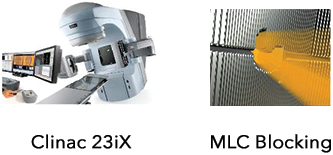General Information about Lung Cancer
Abnormal proliferation of the cells is the basic definition of cancer. When this primary incidence occurs in the lung, this is known as primary lung cancer, as opposed to metastasis (spread from another cancer in the body to the lung). The majority of lung cancers are carcinomas that arise from epithelial cells. The two main types of lung cancer are NSCLC (Non-Small Cell Lung Carcinomas) and SCLC (Small Cell Lung Carcinomas).
Facts about Lung Cancer
- Possible symptoms of lung cancer include dyspnea (shortness of breath), hemoptysis (blood in cough), and loss of weight.
- Most common cause of lung cancer is due to extensive use of tobacco smoke (including second-hand smoke).
- Other common causes may include exposure to asbestos, polluted environments, radon gas, and several genetic factors.
- Treatment usually involves a combination of surgery, radiation therapy, and chemotherapy.
Classification of Lung Cancer
Non-Small-Cell Lung Carcinoma (NSCLC)
The three most common subtypes of NSCLS include: adenocarcinoma, squamous-cell lung carcinoma, and large-cell carcinoma. Adenocarcinoma commonly originates in the periphery of the lung and comprise of approximately 40% of all lung cancers. Squamous-cell carcinoma usually occurs near larger airways and make up roughly 30% of all lung cancers. Large-cell carcinomas are the least common NSCLC and are described as large cell due to the microscopic structure of the cancer cell containing excess cytoplasm and large nuclei.
Small-cell Lung Carcinoma
Small-cell lung carcinoma (SCLC) commonly arises in the primary and secondary bronchi. This type of lung cancer is heavily associated with smoking and tends to be advanced when diagnosed. Spread or metastasis to the brain is quite common.
Signs and Symptoms of Lung Cancer
- Respiratory difficulties such as shortness of breath, severe coughing, hemoptysis (coughing up blood), and/or wheezing.
- Pain in bronchial airways due to compression may lead to general pain in the chest, dysphagia (trouble with swallowing), and Superior Vena Cava (SVC) obstructions.
- General fatigue, fever (usually due to a compromised immune system), and weight loss (due to obstructions) are also common side effects.
Helpful Terms Regarding Lung Cancer
- Dyspnea - Difficulty in breathing
- Dysphagia - Difficulty with swallowing
- Hemoptysis - Coughing up blood
- Adenocarcinoma - Malignant tumor of gland-like structure that originates from the epithelium
- Primary and secondary bronchi - The two main branches of the trachea
- Trachea - Recognized as the wind pipe and serves as the principal passage for conveying air to and from the lungs
- Superior Vena Cava - One of the two large veins that is responsible for returning blood into the right atrium of the heart
Treatment of Lung Cancer
Surgery
Depending on the location, staging, and extent of disease, surgery can be the first part of a treatment regimen to remove the bulk of the tumor. CT and PET scans are used to determine the possibility of whether or not surgery can be used. Pulmonary function assessment and blood tests are also used to dictate the eligibility of a surgical candidate.
A majority of NSCLC cases are often managed with lobectomy, which is a surgical procedure that involves the removal of an affected lobe of the lung. Pneumonectomy is another surgical procedure that involves the removal of a whole side of the lung, but is used much less often than a lobectomy.
SCLC is rarely managed with surgery except in very early stages. Treatment is usually a combination of chemotherapy and radiotherapy.
Radiation Therapy
NSCLC patients who are not surgical candidates are often given radiation therapy in combination with chemotherapy for curative intent. NSCLC with more advanced cancers may also benefit with the use of radiation therapy after surgery. Sometimes chemotherapy along with radiation is used prior to surgery to help shrink the tumor, allowing for a more complete resection.
SCLC cases are also often treated with the combination of radiation therapy and chemotherapy. Prophylactic Cranial Irradiation (PCI) is another radiotherapy technique that involves the treatment of the brain to help reduce the risk of metastasis to the brain. When patients are treated with external beam radiation, a complex blocking system known as multi leaf collimators (MLC) is used during the treatment. This helps to treat only the volume of interest while protecting the surrounding healthy tissue, resulting in fewer side effects. MLC usage allows us to shape and manipulate the exposures for each radiation beam angle, allowing for optimal dose to the area of interest.

Frequently Asked Questions
Q: What are the side effects from radiation to the lung?
A: Radiation treatments are designed to be localized and site specific. For this reason, any potential side effects are directly related to what area is being treated. Common acute side effects during treatments with radiation include erythema (inflammatory redness of the skin), dermatitis (inflammation of the derma), esophagitis (inflammation of the esophagus) and dysphagia (as a result to esophagitis). Patients may also develop a mild cough during treatment. Possible chronic side effects that may occur include dry cough, fibrosis of the lung, and subcutaneous fibrosis of the skin. Side effects can range and vary depending on where the diseased in the lung may be located.
Q: What diet should I be on during radiation treatments?
A: There are no diet restrictions when receiving radiation therapy for lung cancer. Patients who experience dysphagia and have difficulty eating should intake a high calorie liquid diet (such as protein shakes) to help maintain body weight. We ask that you do not drink alcohol or smoke during treatment, as this can make your side effects worse.

